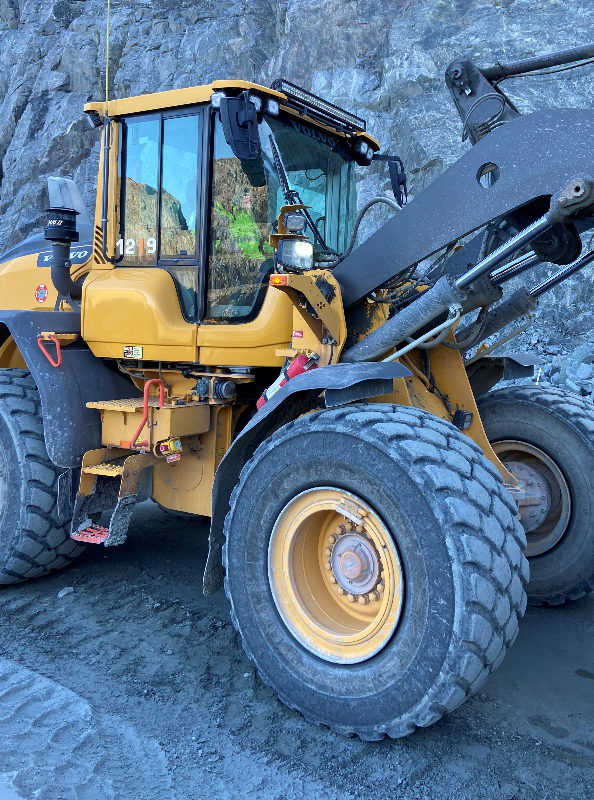The course is given entirely remotely with teacher-led meetings on-line in the form of seminars. These contain lectures and discussions of these as well as of video and written material studied before the seminars. The video material may include demonstrations of apps and instruments. The seminars are therefore mandatory and require active participation. In addition to this, the course includes literature studies, two home practicals using apps, a project work and a written home exam.
CH106V Noise and Vibrations in Working Life - risk assessments and development 4.5 credits

The overall aim of the course is to give the student theoretical and practical knowledge on how work environment development should be carried out, how work accidents can be prevented, how ergonomics can be assessed and developed, and specifically how noise and vibrations in the work environment can affect health and performance, and how these two factors can measured, risk assessed and managed to reduce the risks.
NB! All teaching takes place remotely!
All seminars on Thursdays 1pm - 3pm starting Thursday 31 October 2024.
Apps are downloaded to the mobile for measurements of noise or vibrations in practical course moments.
Information per course offering
Information for Autumn 2024 Start 28 Oct 2024 single courses students
- Course location
KTH Flemingsberg
- Duration
- 28 Oct 2024 - 13 Jan 2025
- Periods
- P2 (4.5 hp)
- Pace of study
25%
- Application code
10055
- Form of study
Distance Daytime
- Language of instruction
Swedish
- Course memo
- Number of places
5 - 50
- Target group
- No information inserted
- Planned modular schedule
- [object Object]
- Schedule
- Schedule is not published
- Part of programme
- No information inserted
Please note that Students not located in Sweden may have problems attending a course at KTH.
You could meet obstacles if you're required to pay fees or if you do not have a Swedish Mobile BankID.
Contact
Caroline Ingeborg Jegerschöld (cije@kth.se)
Course syllabus as PDF
Please note: all information from the Course syllabus is available on this page in an accessible format.
Course syllabus CH106V (Autumn 2024–)Content and learning outcomes
Course disposition
Course contents
- Noise - definition
- Vibrations - definition
- Acute and long-term health effects
- Work environment rules within the area
- Technical measurements of noise and vibrations
- Limit values and risk assessment
- Customized actions
Intended learning outcomes
The overall aim of the course is to give the student theoretical and practical knowledge in general
about how work environment development should be carried out, how work accidents can be
prevented, how ergonomics can be assessed and developed, and specifically how noise and
vibrations in the work environment can affect health and performance, and how these two factors
can measured, risk assessed and managed to reduce the risks.
After completing the course, the student must be able to:
- Give examples of where in working life noise and vibrations occur.
- Describe how noise and vibration can affect health.
- Carry out exposure measurements and risk assessments of noise and vibrations according to current standards.
- Explain how noise and vibration risks can be remedied and give examples of specific measures in different operations (see objective 1).
Literature and preparations
Specific prerequisites
120 credits in technical science, natural science, medical science (incl. Audiologist, Physiotherapist) or human resources science. Alternatively, at least 2 years of professional experience in work environment development. English B/6. Mathematics B/2a,2b or or 2c.
Equipment
Seminars are given via Zoom. All communication between student and teacher and between students takes place via a learning platform, which is why the student is expected to have access to a computer and the internet.
Literature
Examination and completion
If the course is discontinued, students may request to be examined during the following two academic years.
Grading scale
Examination
- LABA - Laboratory work, 1.0 credits, grading scale: P, F
- PRO1 - Project work, 1.0 credits, grading scale: P, F
- SEM1 - Seminars, 1.0 credits, grading scale: P, F
- TEN1 - Written exam, 1.5 credits, grading scale: A, B, C, D, E, FX, F
Based on recommendation from KTH’s coordinator for disabilities, the examiner will decide how to adapt an examination for students with documented disability.
The examiner may apply another examination format when re-examining individual students.
Laborations (LABA), 1.0 credits) grading scale: P,F, examines course objective 3
Project work (PRO1, 1.0 credits) grading scale: P, F, examines course objectives 1 - 4
Seminars (SEM1, 1.0 credits) with compulsory attendance, grading scale P/F, examines course objectives 1 - 4
Exam (TEN1, 1.5 credits) grading scale: A, B, C, D, E, FX, F, examines course objectives 1, 2 and 4
Opportunity to complete the requirements via supplementary examination
Opportunity to raise an approved grade via renewed examination
Examiner
Ethical approach
- All members of a group are responsible for the group's work.
- In any assessment, every student shall honestly disclose any help received and sources used.
- In an oral assessment, every student shall be able to present and answer questions about the entire assignment and solution.
Further information
Course room in Canvas
Offered by
Main field of study
Education cycle
Add-on studies
Contact
Supplementary information
The target group for this course is people who are not already program students at KTH.